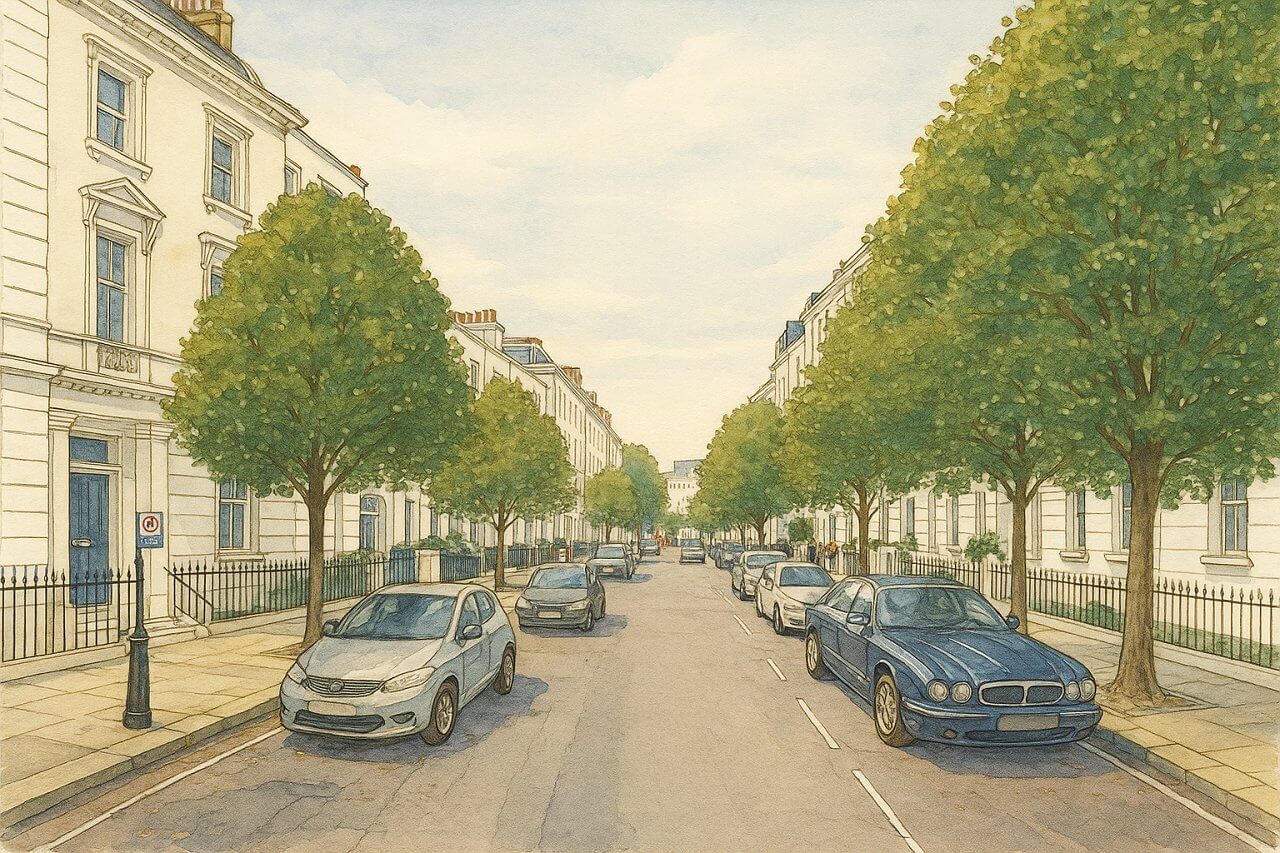
Denbigh Street, London
Denbigh Street is a quiet and characterful street in Pimlico, City of Westminster, made up of three disconnected sections. Though modest in length, it offers a rich blend of historic charm, Georgian and Victorian architecture, and local convenience.
Denbigh Street lies in the heart of Pimlico, in the southern part of the City of Westminster. Despite being named as a single street, it comprises three non-contiguous sections:
- From Warwick Way to Belgrave Road
- From Gloucester Street to Charlwood Street
- From Charlwood Street to St George’s Drive
These segments are all situated within easy walking distance of one another in the grid-like street plan of Pimlico, just a short distance from Victoria Station and the Thames Embankment.
Length and Structure of the Road
Each section of Denbigh Street is around 100 to 150 metres long, making the total length of all three segments approximately 350 to 400 metres. The layout is typical of the mid-19th-century Pimlico development: short, orderly streets lined with terraced houses and mansion blocks.
History of Denbigh Street
Denbigh Street was laid out as part of the grand Pimlico estate developed by the Grosvenor family in the 1830s and 1840s. The estate was masterminded by the builder Thomas Cubitt, who was responsible for transforming much of the area into elegant residential streets.
The street appears on maps from the mid-19th century, reflecting the expansion of Pimlico as a fashionable but slightly more affordable residential area compared to nearby Belgravia.
Name and Pronunciation
Denbigh Street takes its name from the town of Denbigh in north Wales, reflecting a common naming practice of the time to use Welsh and Scottish place names across the newly developed areas of London.
The name is pronounced DEN-bee, and in the International Phonetic Alphabet (IPA), it is rendered as /ˈdɛn.bi/  .
.
Character of the Street
Denbigh Street has a calm and local atmosphere. Unlike some of Pimlico’s busier roads, it carries little through traffic. The street is primarily residential, with a mix of white-stuccoed Victorian terraces, converted flats, and a few small local businesses including cafés and grocers near Warwick Way.
The character is quintessentially Pimlico—elegant yet understated, historic yet quietly lived-in. Each segment of the street retains this charm, despite their separation by short cross streets.
Points of Interest Nearby
Denbigh Street itself doesn’t boast major landmarks, but it is very close to several sites of interest:
- Warwick Way – A bustling local high street with shops, cafés, and amenities.
- Pimlico Green – A charming open space just a few minutes’ walk south.
- Tate Britain – Located about 10 minutes’ walk east, along the riverside.
- Eccleston Square – A garden square with private access, visible from nearby cross streets.
Real Estate on Denbigh Street
As of May 2025, property prices on Denbigh Street are typical for Pimlico. Flats on the street generally range between £600,000 and £1.2 million depending on size, condition, and location.
Average flat sizes here vary from around 500 sq ft (46 sq m) for one-bed conversions to 1,000+ sq ft (93+ sq m) for larger maisonettes or split-level flats. Houses, though rare, are valued from £2 million and upward.
These prices are modest compared to neighbouring Belgravia, but still significantly above the London average. Pimlico's continued popularity ensures high demand for properties here.
Transport Connections
Nearest London Underground Stations
Denbigh Street is conveniently located between several Underground stations:
- Victoria Station (Victoria, Circle, and District Lines) – around 7 minutes’ walk.
- Pimlico Station (Victoria Line) – about 5 minutes’ walk to the south.
Nearby Bus Stops
Several major bus routes pass close to Denbigh Street. The nearest stops are on:
- Belgrave Road
- Warwick Way
- St George’s Drive
These stops are served by routes connecting to Westminster, Oxford Street, Camden, and Clapham Junction.
Fun Fact
Denbigh Street and its neighbours were part of a major film shoot in the 1990s for a British detective drama. The orderly Victorian streets and quiet atmosphere made them a perfect stand-in for 'anonymous London backstreets'.
Another fun detail: on Google Maps, many visitors mistakenly think Denbigh Street is one continuous road, only to find their walking directions broken up by unexpected turns—a small navigation mystery in central London!
Quick Facts
- Location: Pimlico, City of Westminster, London
- Length: Approx. 350–400 metres across three segments
- Built: Mid-19th century as part of Thomas Cubitt’s Pimlico development
- Name origin: Named after Denbigh in North Wales
- Pronunciation: DEN-bee (/ˈdɛn.bi/)
- Street character: Quiet, residential, historic architecture
- Nearby sights: Warwick Way, Tate Britain, Pimlico Green, Eccleston Square
- Property prices (May 2025): £600,000–£1.2m for flats; £2m+ for houses
- Flat sizes: 500–1,000+ sq ft (46–93+ sq m)
- Underground stations: Victoria (Victoria, Circle, District); Pimlico (Victoria)
- Bus stops: Belgrave Road, Warwick Way, St George’s Drive
- Fun fact: Used as a filming location for detective dramas
Map of Denbigh Street, London

Painting of Denbigh Street, London (View image in full size)